Hi guys,
I'm researching the maximum direct connection distance between two Android phones for transfering small amount of data - which lead me to BLE Coded PHY S8 as a promising option. As a first test I used your nRF Connect Android app to do some field testing.
But I cannot get any longer distance connection via coded phy to work. After 20 meters I loose the connection. So maybe (hopefully) I'm doing something wrong or coded phy is far away from the 1000m I've read about...
I hope this is the right place to ask. If not please let me know.
Anyhow... here are the details of my test:
Phone 1 (server) is a Nokia 2.3:

I set up a GANTT server (get current time for testing purposes):
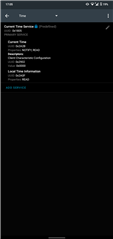
And started an advertiser:
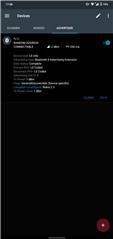
Phone 2 (client) is a OnePlus 7 Pro:
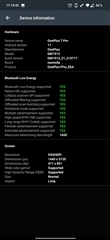
Where I've scanned and connected to the Nokia 2.3, and read the PHY which is set to LE Coded:
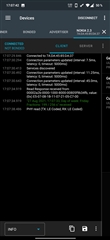
But once I walk away with the client phone from the server the read/refresh of time fails and the connection gets lost after 20m or so.
The server phone is placed inside at the window sill and I'm walking away outside on the lawn with no obstacles in between.
Things I've tried:
- Changing the Tx Power Level and the interval of the Advertiser on the server phone
- Setting S8 "manually" on both phones after the connection was established via:
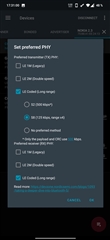
I have found a couple of threads:
https://devzone.nordicsemi.com/f/nordic-q-a/77411/testing-range-of-ble-coded-phy-with-nrf52833-dk
The last 3 say that S8 is used by default anyhow or are not really helpful...
The first one is exactly my issue! But as far as I can interpret the discusion there I would conclude: It does not really get better than the 20 meter.
Is that true?
Thanks guys
Soko


